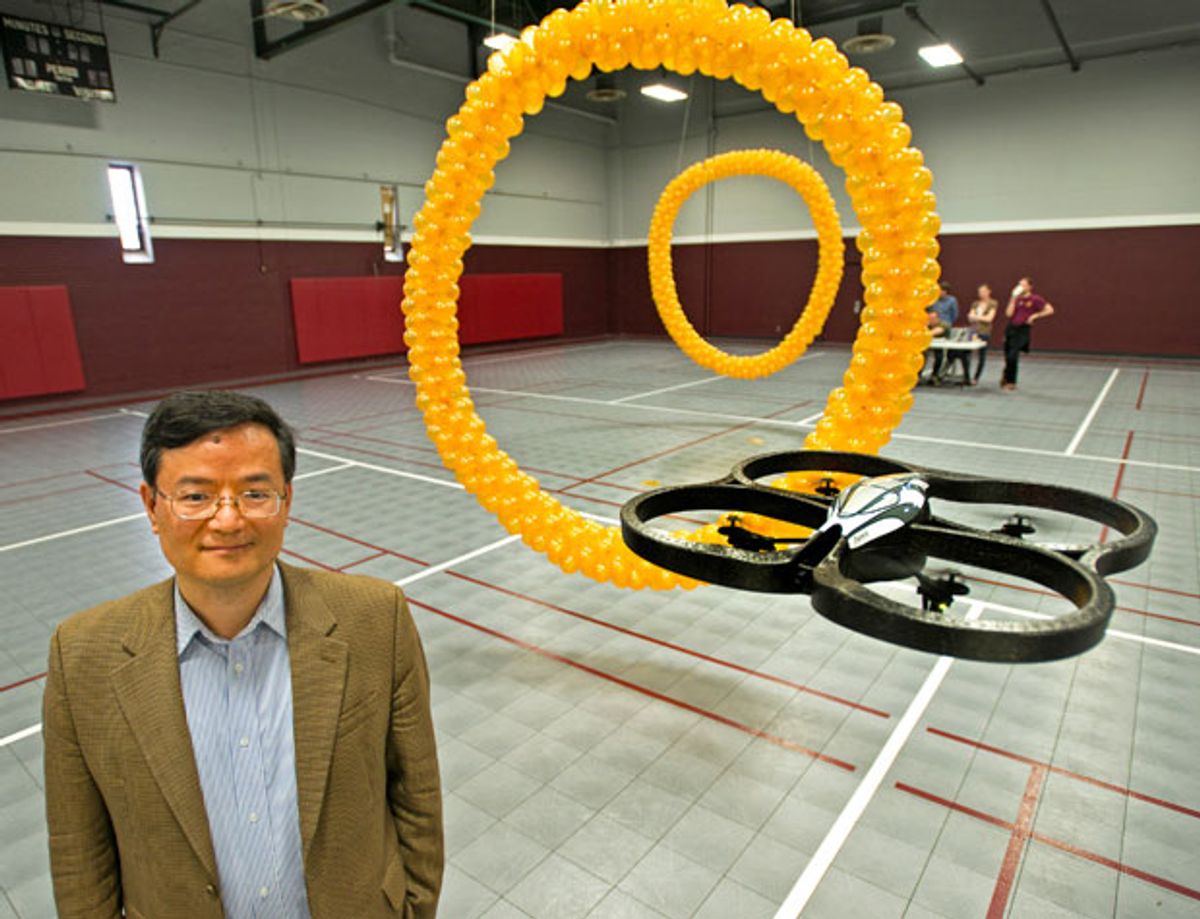Bin He, a biomedical engineering professor at the University of Minnesota, is developing tools to help people with disabilities. But part of that research involves some studies that look like pure fun. He and his students have developed a way to control the flight of a quadrotor using your mind.
“Our study shows that or the fist time, humans are able to control the flight of flying robots using just their thoughts sensed from a noninvasive skull cap,” says He.
Subjects wore a skull cap studded with 64 EEG sensors. Using special algorithms, data from the sensors were translated into commands for the robot. When a wearer thought about making a fist with one his left hand—but did not actually do it—the robot would flight left. Thinking about the right fist tilted sent the robot to the right. Both fists meant rise and then fall.
Using just those thoughts He and his subjects could fly the quadrotor through a series of suspended hoops. The project started using just a simulated helicopter, but the quadrotor “adds more complexity to the task,” he says. “Subjects are controlling real forces.”
The key to this was some pioneering work done earlier in He’s lab that allowed them to first show that imagining a movement produced a very similar set of neural responses in the brain to actually performing the movement. The Minnesota engineers monitored such intended movements using functional magnetic resonance imaging and EEG simultaneously, which was technically tricky. They then used that data to figure out how to decipher intended movements using EEG only.
Other researchers have used fMRI to control a robot directly, but as those imagers are massive and dangerously magnetic, that is hardly practical. A skullcap with 64 electrodes might not seem all that practical either. But, according to He, most of those electrodes aren’t needed to make the thought control work.
The technology, He stresses, is intended to help people with disabilities do things like control wheelchairs and robotic arms—a project underway in his lab. It may even play a role in helping people recover from stroke, says He, because the imagined movements might accelerate the rewiring of brain tissue that can take over for the damaged part.
Photos: University of Minnesota
Samuel K. Moore is the senior editor at IEEE Spectrum in charge of semiconductors coverage. An IEEE member, he has a bachelor's degree in biomedical engineering from Brown University and a master's degree in journalism from New York University.



